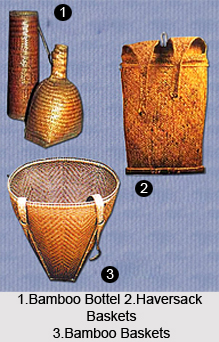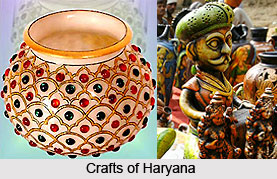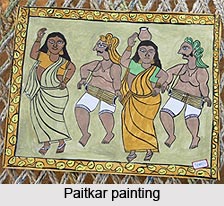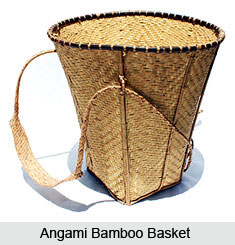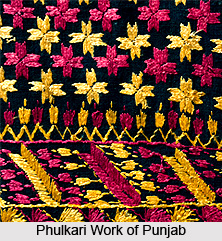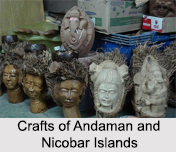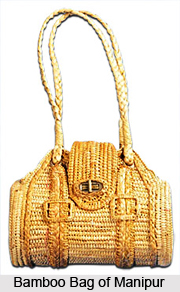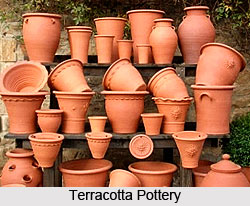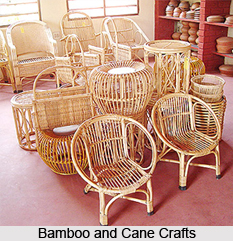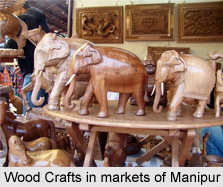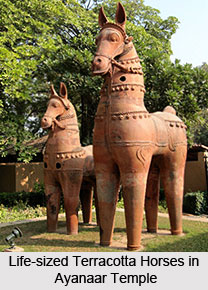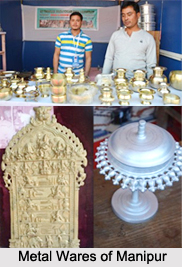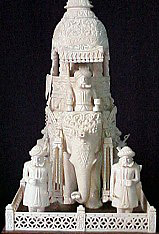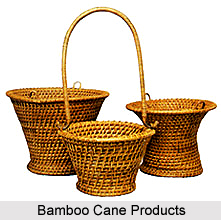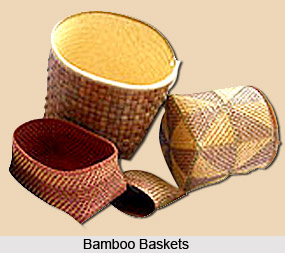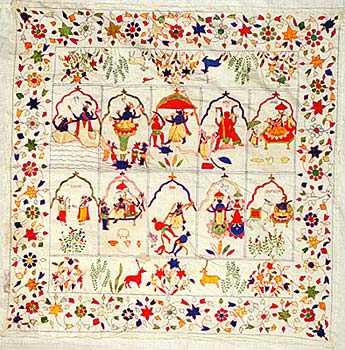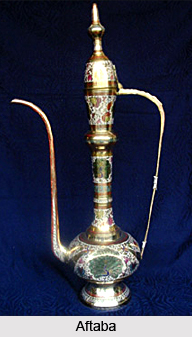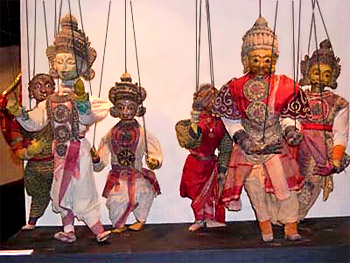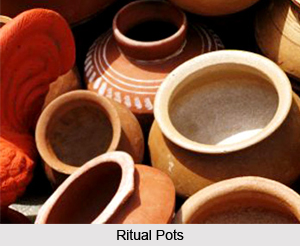 Kutch has a rich tradition particularly in the decorative arts of pottery, embroidery, printed and woven textiles, wall painting, jewellery and leatherwork. In spite of the fact that Kutch has climatic extremities this region of Gujarat is known to have a rich culture in the field of Clay Crafts. Clay Crafts of Kutch also have a different dimension besides the normal pot making. The pastoral communities of Kutch place high value on the art of decoration and the patterns executed on their pottery reflect these rich traditions. Lodai and Khavda are important regions in the district of Kutch which are known for its clay crafts.
Kutch has a rich tradition particularly in the decorative arts of pottery, embroidery, printed and woven textiles, wall painting, jewellery and leatherwork. In spite of the fact that Kutch has climatic extremities this region of Gujarat is known to have a rich culture in the field of Clay Crafts. Clay Crafts of Kutch also have a different dimension besides the normal pot making. The pastoral communities of Kutch place high value on the art of decoration and the patterns executed on their pottery reflect these rich traditions. Lodai and Khavda are important regions in the district of Kutch which are known for its clay crafts.
Clay Crafts in Lodai
The potters of Lodai are Muslim and highly regarded for the quality of their work, especially in the rich and varied slip decoration executed by women. A wide range of vessels are produced to fulfil the requirements of a dozen different communities and tribes residing in the area, including Rabari (tribal nomadic sheep and camel herders), Jats (Muslim shepherds and farmers), Ahir (farmers) as well as blue collar workers and labourers working in more modern fields of transportation and construction. Particular vessels have associations with individual communities. Just as personal adornment in the form of clothes and jewellery can express group identity, so the form and decoration of a clay vessel can take on this function - and is strongly preserved here. The potter families in Lodai are gradually decreasing in number.
In Lodai the potters are not in the process of pot making from the months July to September. During this time the potters rent land and cultivate them.
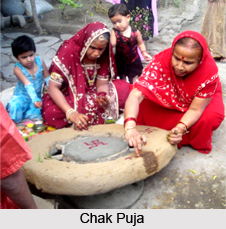 The various types of vessels that are prepared in Lodai are dry storage vessels for grain and flour, vessels for liquids include those for carrying water, storing water, making and storing buttermilk. Very large vessels for water storage known as kothi are also made by the potters of Lodai.
The various types of vessels that are prepared in Lodai are dry storage vessels for grain and flour, vessels for liquids include those for carrying water, storing water, making and storing buttermilk. Very large vessels for water storage known as kothi are also made by the potters of Lodai.
Water is carried to large distances in vessels like ghaddo, bhaddak, bhambhudi which are produced with small mouths to reduce spillage. Each design has a groove in the neck around which a rope is tied to secure the vessels during transport, whether on the person`s back or on a camel or bullock cart. Buttermilk vessels also come in various sizes with different widths at the mouth; larger ones are used for making buttermilk which is stored in the smaller ones with narrower mouths to facilitate pouring. Vessels for milk have relatively high necks with narrow openings, reflecting their function of carrying milk into the fields.
Many types of cooking vessels are made in the region of Lodai. Those which are exposed to heat have enlarged thick rims (so the vessel can be handled when hot) wide mouths and gentle contours. Foodstuffs such as rice and milk are boiled in a kunnu, which has a sufficiently wide mouth to allow stirring. Other ingredients which need to be stirred frequently while cooking, such as vegetables and meat, are placed in wide mouthed vessels with almost flat bases - taplo.
The tavdi, used to make rotlo (a type of bread) comes in two sizes. The kachchi tavdi, used for making the large rotlo eaten by pastoral communities, is bigger, thicker and has a handle so it can be manipulated more easily when hot. The smaller tavdi, used in urban contexts, has only a thicker outer rim for easier handling. Many of the cooking vessels - sakio and tavdo - have a sharp angle between the rim and neck, providing a grip for easy handling. Vessels which are used for food preparation - kathrot - are open and shallow with a flat base, and those used as eating utensils - tabak, nani patar, sanak - are also open and shallow with a rim base to add stability whilst eating. Amongst the Muslim community it is traditional for all members to eat from a communal plate, and there are a variety of sizes to accommodate requirements. Ritual pots for marriage, death and birth are modifications of these pots in daily use but with different decorations.
The clay which is used in Lodai is collected free of charge from the large lake on the outskirts of Lodai for many generations. It is light in colour and requires no additions.
The pot making process that is used in Lodai after the final beating, the potter uses an interesting technique to give the form a fuller shape. The pot is supported in a sherd and then a lid is placed into the mouth to enclose the air. Taking the pot in both hands, the potter raises it a few inches into the air and then stamps it down into the sherd, the trapped air giving the shape a more generous form.
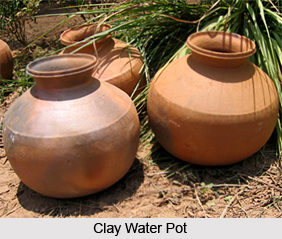 In Lodai a ritual called chak puja is performed around the potter`s wheel. Potters and the pots play an important role in the Hindu weddings in many of the places of India.
In Lodai a ritual called chak puja is performed around the potter`s wheel. Potters and the pots play an important role in the Hindu weddings in many of the places of India.
Clay Crafts in Khavda
Khavda in Kutch is another region which excels in clay crafts. Clay crafts in Khavda have an altogether different dimension. The beauty of clay crafts in Khavda is witnessed in the form of bhunga which is a round hut made from mud and wood with a thatched conical roof. The thick walls are thatched in nature with excellent insulating properties well suited to the intense summer heat and the circular structure has a higher survival rate during earthquake. Each bhunga has a small separately built rectangular kitchen, and the bathing area consists of a stone slab set into the ground outside, screened by bushes. Some of the walls are painted with rich geometric patterns in earth colours of pink, yellow ochre and black, the lines and marks bearing a close resemblance to embroidery stitches.
Although the contents of the bhunga are limited to life`s bare essentials, the intricate relief decoration and inlaid mirrors which catch and reflect the light convey a rich and lavish environment. The various designs which form an intricate part of Bhunga are kungri - border, butti - small flowers, vel creeper, handhia - camels, panihari -woman with waterpot, mor or peacock.
In fact the inhabitants of Khavda consider bhunga a large clay vessel which is formed and decorated using similar techniques to that of pottery making.
